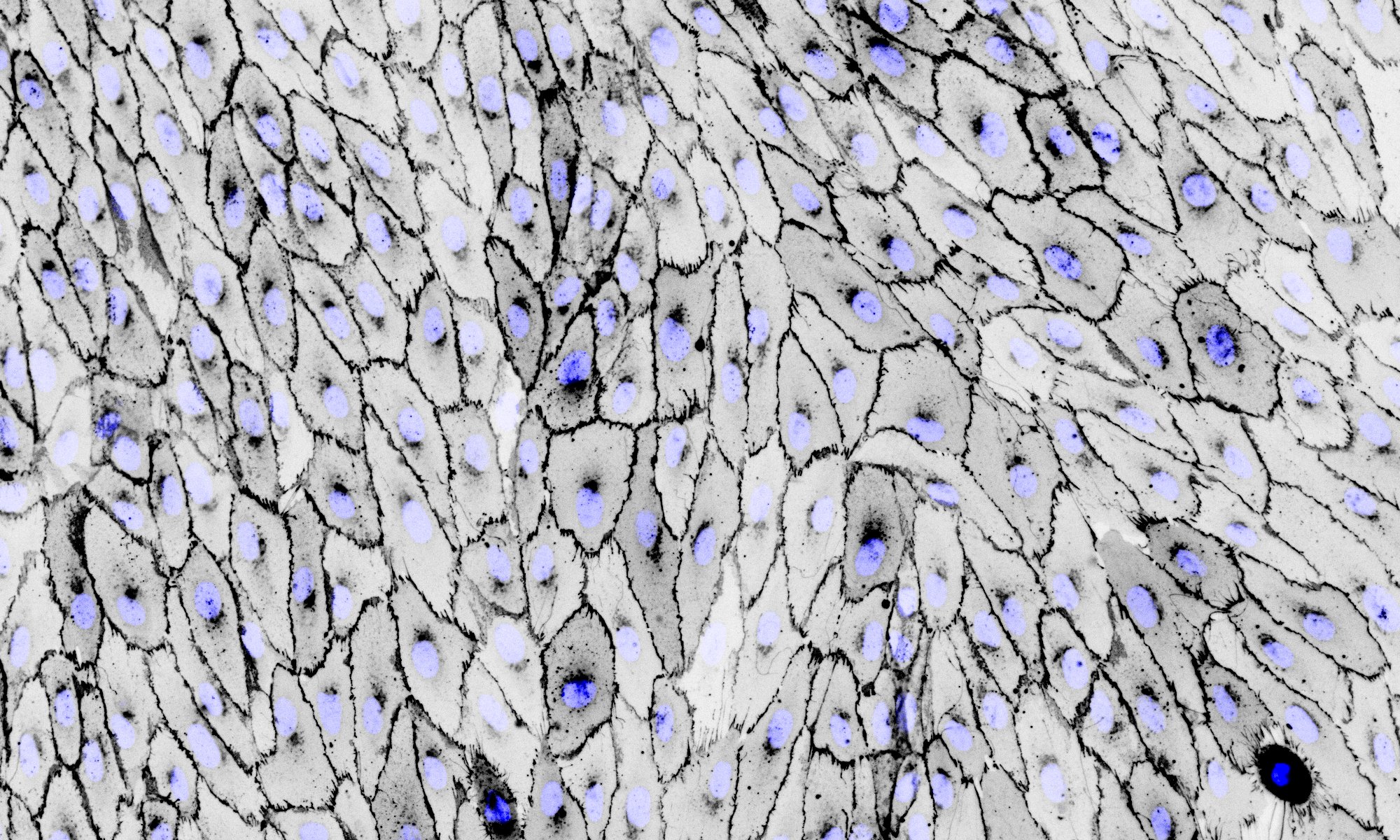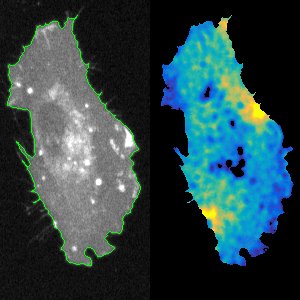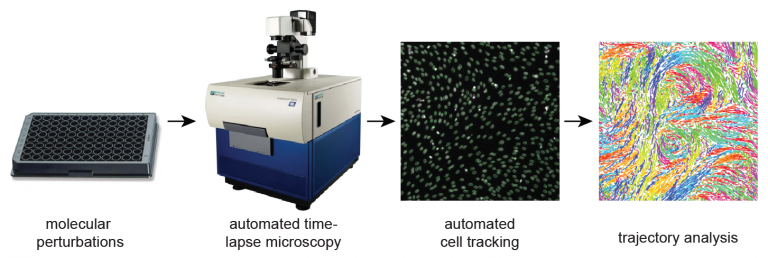Welcome to the Hayer Lab!
When large numbers of cells form animal tissues, tissue function ultimately emerges form the coordinated behavior of many individual cells together. Our lab's research is focused on collective movement of cells, a process with critical importance for development, repair, and disease. Collectively migrating cells are self-propelled, but they coordinate their movements through neighbor-neighbor interactions with each other. Our research aims at identifying how functional coupling between cells is achieved, through communication across adhesive cell-cell junctions.
We are using cultured endothelial cells as a model system and follow an interdisciplinary approach, using molecular biosensors, micropatterned substrates, quantitative live-cell microscopy, and computational image analysis. Our research aims to understand a very fundamental question: what are the mechanisms that allow cells to communicate with each other, coordinate or influence each other's intracellular machinery, and ultimately result in the complexity of tissues and organs?
Learn more about how we study collective cell migration and about our research.







